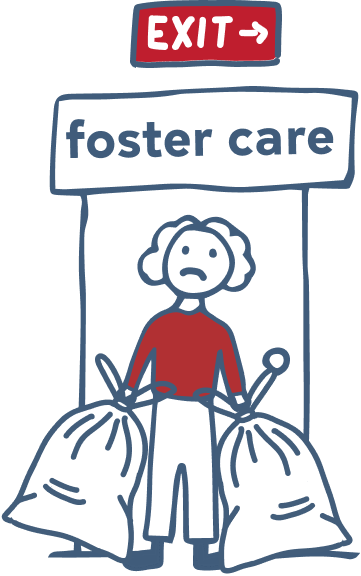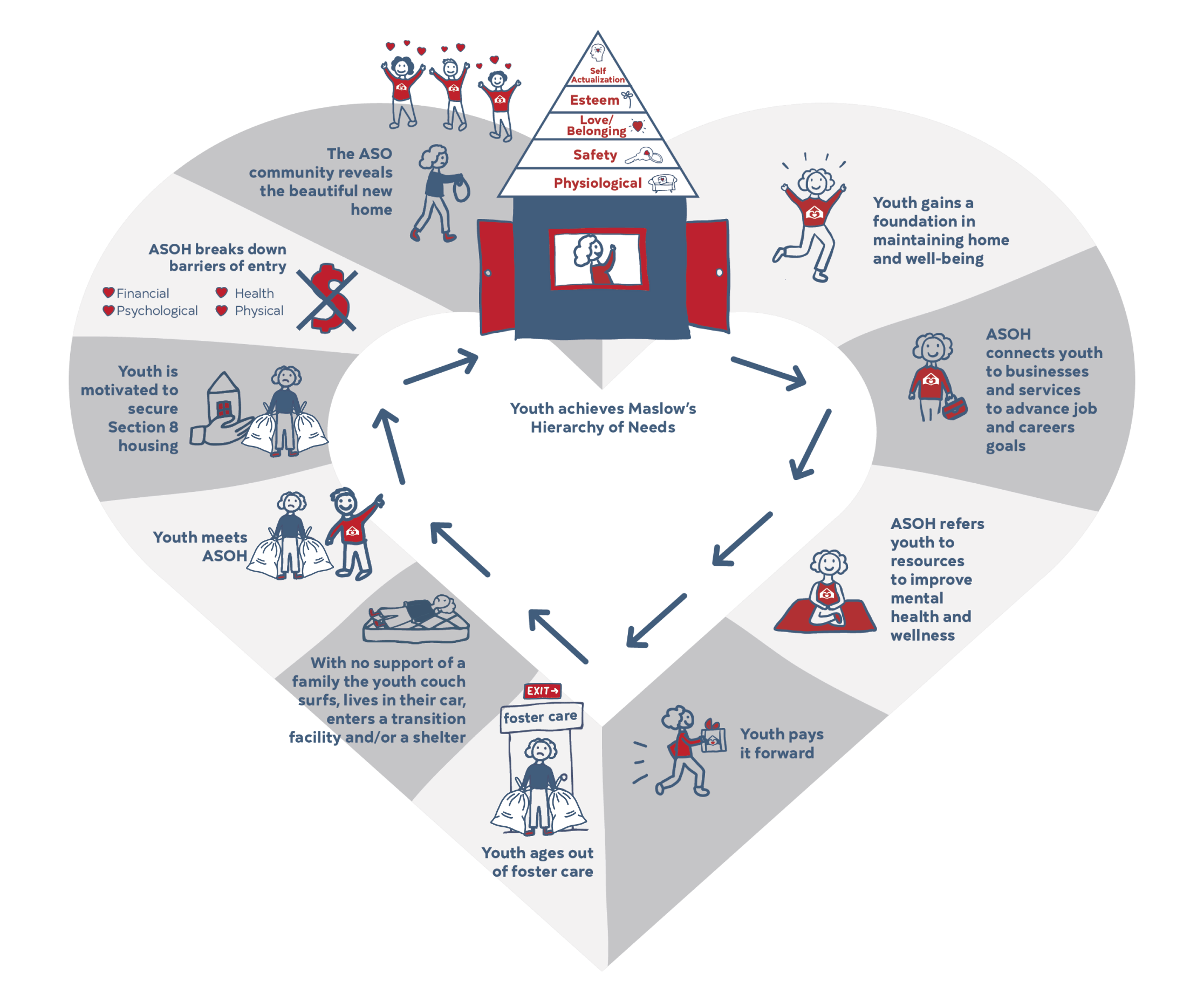Removing Barriers
& Creating Opportunity
The average person spends the largest percentage of their income on housing and the greatest amount of their time at home
The average person spends the largest percentage of their income on housing and the greatest amount of their time at home




ASOH removes the financial, physical, psychological, and health barriers that prevent a young person from having a home. ASOH advances economic empowerment for youth aging out of foster by providing a functioning home and the necessary tools, resources, and opportunities that empower them to gain optimal outcomes in education, work, and health.

Barrier:
The financial means to purchase up to 330 items required for a fully functioning home.
Gains:
The minimum cost of $15k that would otherwise be spent on furnishing a home is utilized on covering food, health, education, childcare, transportation, rent, and utilities.

Barrier: It takes a family and a community to help young people set up their first home.
Gains:

Barrier:
After a lifetime of housing instability, the capacity to manifest a home is especially difficult for those who have never had home.
Gains:



© 2025 Copyright A Sense of Home, Sign Up for Our Newsletter!
A tax exempt charitable organization qualified under
Section 501(c)(3) of the Internal Revenue Code.
Donations are tax-deductible as allowed by law.
Tax ID# 47-3814056.
By submitting this form, you are consenting to receive marketing emails from: A Sense of Home. You can revoke your consent to receive emails at any time by using the SafeUnsubscribe® link, found at the bottom of every email. Emails are serviced by Constant Contact
Necessary cookies are absolutely essential for the website to function properly. This category only includes cookies that ensures basic functionalities and security features of the website. These cookies do not store any personal information.
Any cookies that may not be particularly necessary for the website to function and is used specifically to collect user personal data via analytics, ads, other embedded contents are termed as non-necessary cookies. It is mandatory to procure user consent prior to running these cookies on your website.